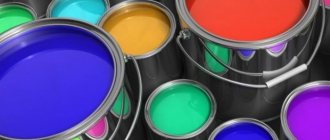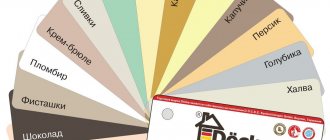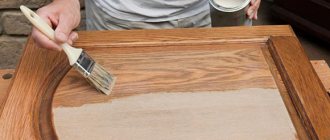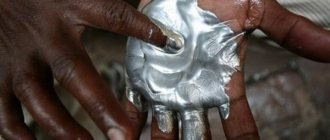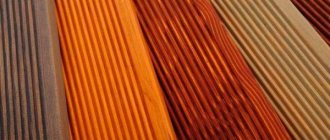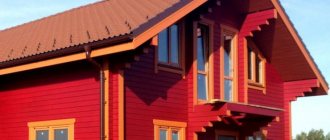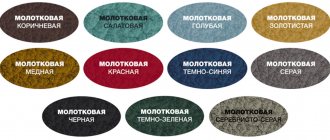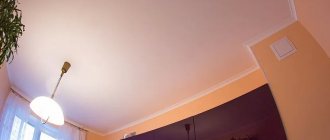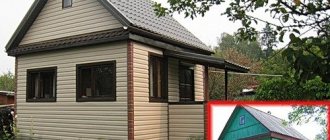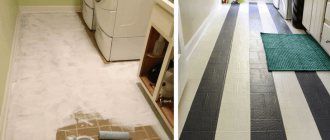How to paint wooden doors
An important condition for quality painting is to prepare the surface well. The wood is treated with an antiseptic against fungi and sanded. Much attention is paid to the coating material: for example, varnish can advantageously present the beautiful texture of the canvas, and paint of a certain shade will help to fit perfectly into the interior design.
How to paint a wooden door with your own hands
To do this, you need to have tools (heat gun, spatulas, sandpaper or grinder, brushes and rollers). The door is prepared for painting: to do this, it is removed and the layer of old coating is removed. The wood is sanded to perfection, and then covered with paint or varnish in several layers and allowed to dry.
How to beautifully paint a wooden door
When painting a door, consider the overall design of the room. Pay key attention to color. For example, light and pastel colors are in fashion now. Such a door is advantageous: it looks beautiful and visually expands the space.
How to paint wooden doors in a country house
Varnish (matte, glossy, colored) is suitable for this purpose. Keep in mind that the structure of the wood, including its defects, will be visible under the varnish layer. There are many types of impregnations, waxes and varnish-based oils. Before choosing paint for a door, consider its properties.
How to paint old wooden doors
To begin, the door is removed from its hinges. Then it is disassembled, leaving the canvas itself. Old paint or varnish is carefully removed. The wood is covered with the first layer of varnish or paint and left until completely dry. After this, apply a second layer, which must also dry completely. The finished surface is polished.
How to remove old paint from a wooden door
It is best to remove old paint using an industrial hair dryer. You will also need a spatula and fine sandpaper. Warming up the old paint, pry it up with a spatula and remove it. The remaining particles on the wood are rubbed with sandpaper.
You can find out more about how to remove old paint here.
How to paint a solid pine door
The main advantage of pine wood is its texture. Therefore, it is better to coat the door with colorless varnish. The biggest mistake is using regular oil paint. It is also not allowed to apply varnish to wood that has not yet dried.
How to paint a fiberboard door correctly
For a smooth and well-sanded surface, varnish is suitable. Alkyd varnishes are applied without preliminary preparation of the door. If the fiberboard surface has flaws, it is sanded, primed and painted. To add shade, stain is used.
How to paint a varnished wooden door
For this it is better to use varnish, but only with a tint. It is not recommended to use paint over old varnish - it will not stick. Therefore, before painting it is necessary to remove the old varnish coating.
Is it possible to paint veneer doors?
Before painting a veneer door, you need to decide whether to leave the solid color or change the color completely. In the first case, varnish is suitable, in the second - paint. Priming is used if it is decided to coat the veneer with paint. This measure is necessary if the wood has many flaws.
Painting a door with stain
Stain is a colored component that not only gives the wood a tint, but also protects the product from rotting. This product has a liquid consistency and can be applied using a spray gun or brush. Stains are available in the following options:
- aqueous compounds easily penetrate the wood structure and emphasize it, but the product takes a long time to dry and makes the surface rough;
- solvent-based stain provides a smooth surface, has a strong odor and dries fairly quickly after application;
- oil and wax stain options are environmentally friendly and suitable for treating children's furniture and interior doors.
The stain may contain protective components
When choosing a stain, it is important to consider its purpose; for example, the product may be optimal for outdoor use. If you treat the front door with a tool for interior work, the door will not be sufficiently protected from moisture and will also quickly lose color.
The technology for using stain is similar to the method for using varnish or paint. The main actions are expressed as follows:
- Placing the canvas on supports, preparing and stirring the product.
- Test spraying the stain from a spray gun or applying it to a test board with a brush.
- Spray or brush evenly onto one layer of the door leaf.
The stain is applied in a thin layer and evenly
The gap between sprays or brush strokes should be minimal. This will avoid highlighting borders and differences in shade.
How to paint metal doors
Painting metal doors is fundamentally different from painting wooden doors.
How to paint a metal door
The metal surface is cleaned, wiped and dried. At the same time, rust and old coating are removed, and uneven surfaces are primed. Paint for metal doors can be alkyd, graphite, acrylic, hammer, epoxy. It is applied in several layers, after which it is allowed to dry completely.
How to paint a scratched door with spray paint
The damaged area is sanded to prevent rust. Then the area is wiped with solvent. Next, the metal doors are painted with powder paint in several layers, and the first layer can be made with primer.
Advantages of stain and varnish
Protective stains differ from classic impregnations. If the door is coated with this composition, it will “breathe”. The coating in this case is resistant to moisture and cracking. There is a large selection of stains on the market. They are suitable for solid wood products:
Some of the stains are transparent. Such solutions emphasize the beauty of wood and protect it from harmful influences. Brushes must be used for application. Read the instructions carefully: some manufacturers suggest applying one layer, while some recommend applying several layers.
It is advisable to coat a door that has been previously painted with clear varnish. In this case, it will be less susceptible to external negative influences and will retain the shine and color of the coating. If you have coated your door with acrylic varnish and notice that there is a whitish tint left, don't worry - it will become transparent after it dries completely.
By choosing a special cold-curing varnish, you can make the coating of a solid pine door glossy or matte.
How to Paint Other Types of Doors
How to paint a laminated door
The first stage is surface preparation. It is cleaned of dirt and unevenness, and then puttied. Then the coating is matted with fine sandpaper and wiped with white spirit. The paint is coated in several layers and waited for it to dry completely.
How to paint a dermantine door
There are special water-based paints for restoring dermantine and leatherette. As an option, you can use a primer with high adhesion, onto which any paint with a high content of plasticizers can be applied.
How to paint a plastic door
For plastic, water-dispersion and acrylic paints are used. The surface is wiped with a special cleaning liquid or hot water to remove dirt. Then the door is treated with fine sandpaper and wiped dry with a napkin. It is best to apply the paint with a spray gun, as it does not leave streaks.
How to stain pressboard doors
The canvas is covered with a layer of stain. Excess of the latter is removed with a rag. The structure of the wood appears through the stain, which is very similar to natural wood. When the stain dries, the door is opened with varnish. In appearance, such a door is no different from the one made from solid wood.
What color to paint the door frames in the kitchen
Designers advise choosing bright, rich colors for the kitchen that give a good mood. Delicate pastel shades and traditional white are also suitable. Contrasting doors look good: the canvas is bright in color and the jambs are neutral, or vice versa.
How to paint interior doors in an interesting way
A safe option is to paint the door moldings in a contrasting color. Geometric compositions made from different colors look original. Stencil patterns, vertical stripes, and circles typical of the pop art style look good. Acrylic, an odorless paint for interior doors, is well suited for this.
How to paint interior doors white
If you don’t know what paint to paint interior doors, choose white - it’s a win-win option. The door is pre-primed and dried. Start painting from the ends or recesses (if there are any). Apply a minimal amount of paint to the brush. The accumulated paint in the corners of the panels is removed with a sponge.
How to paint a door antique
The painting technology is no different from painting a regular door, with the exception of the materials used - stain, patina, special waxes and colorless varnishes. An important condition when painting is that the wood texture should be clearly visible.
So, important conditions when painting a door are careful preparation of its surface and the choice of high-quality paints and varnishes. A bright palette, special aging effects, unusual design solutions - all this will turn the door leaf into a real work of art!
Types of coatings for painting solid pine doors
- Using sandpaper. For more convenient work, it is recommended to use a block with sandpaper stuffed on it. To completely remove the coating, it is necessary to start processing with coarse-grained paper, gradually approaching zero.
- Using a grinding machine. This option is much faster than the manual method. The tool carefully removes the old coating, leaving the surface clean and smooth.
- Solvent. Chemicals do not completely remove all layers, leaving marks on the wood. But this option is also used during coating removal.
The paint for the door leaf must meet high performance characteristics and be safe for human health. Conventionally, paint and varnish materials are divided into two groups:
- It is better to paint new wooden interior or entrance doors with transparent varnishes and impregnations. The applied layer is a decorative glaze that does not hide surface defects. A transparent coating can highlight the interesting structure of new wood.
- Opaque paints or enamels for windows and doors are made from solvents with added pigments. Under a new layer it is easy to hide wood defects, uncleaned areas of old paint, or simply give the door block a new original look.
Most often, when restoring a wooden door, preference is given to opaque paints.
From a wide variety of interior work, it is best to choose safe water-based paint or varnish. From the street, a wooden canvas can even be coated with nitro paint.
Alkyd paint
It is advisable to use alkyd paint during major renovations when no one lives in the apartment. During this period, all toxic odors will have time to disappear. The dried surface can be matte or glossy, but in any case it repels moisture well.
Alkyd quick-drying enamel is characterized by the presence of a pungent odor. Its popularity is justified by the variety of colors, low cost, and resistance to aggressive environmental influences.
Alkyd varnish
Due to their transparent structure, it is better to cover a new wooden interior or entrance door. The disadvantage is the strong odor and long drying time. A shiny transparent glaze will highlight the beauty of natural wood.
Acrylic paint
The best choice to paint interior wooden doors indoors. The advantage of the coloring composition is the absence of a toxic odor, as well as the ability to preserve the wood texture. A thin layer allows the wood to “breathe”.
Acrylic enamels dry quickly, and after painting there is no toxic odor indoors. Another advantage is the large selection of colors. The disadvantage is the high cost. After drying, the surface becomes matte. Additional opening with acrylic varnish further increases the cost of painting a wooden structure.
Acrylic lacquer
Acrylic varnish is perfect for covering a new, unfinished interior door. The non-flammable composition, harmless to human health, will preserve the color and texture of the wood. The wooden door leaf on the street side is not coated with acrylic varnish.
Thermal enamel
It is unreasonable to use it for an interior door block. The paint is expensive and its main purpose is to protect the painted surface from low and high temperatures. If desired, you can paint a wooden or metal door at the entrance to the house. Thermal enamels differ in their scope of application. For wooden panels, Bosny aerosol paint is suitable; depending on the brand, it can withstand heating up to a temperature of 200°C or 650°C.
Nitropaint
The most durable and durable paint for wooden doors is nitro varnish or nitro enamel, but it is better not to use it for interior door blocks. They are highly toxic and can only be handled in well-ventilated areas. Nitro paint is suitable for the front door. If it needs to be removed in the future, it will not be easy to do.
Polyurethane paints, characterized by good adhesion to wood, are gaining popularity. With proper preparation of the wooden surface, you can not be afraid of the appearance of blisters on the door. The dried layer of paint is completely harmless to humans, retains its bright color over a long period of use, and is also resistant to scratches. The main advantage of the polyurethane layer is elasticity. If the wood is slightly deformed, cracks will not appear in the paint.
To paint a varnished veneered wooden door, the surface is cleaned using a special floor solution. After removing the old varnish, the veneer is primed, and when dry, it is painted.
It is necessary to renew the entire wooden door block if the coating is damaged over a large area. It is easier to wipe out small scratches by matching the color of paint or varnish.
Paints vary according to the base used for production.
Oily
They are convenient for painting, and the coating made from them is practical to use: it is enough to simply wash off dirt from the surface with a damp cloth. One layer is enough. But if you want to get a deep, rich shade, you can paint a wooden door made of pine or oak in two layers. In addition, several layers will reliably protect the array from external influences.
Acrylic
They do not have an unpleasant odor and are non-flammable. The paint adheres well to the surface of a solid wooden door and dries quickly (about 24 hours). If the room has high humidity, the drying process may take a little longer. When applying acrylic paint to an old coating, further cracking can be avoided due to the special composition and structure of the paint.
Stains
Stain differs from ordinary paints in that it does not remain on the surface of a wooden door as a separate layer - it penetrates into the wooden panel. This impregnation is suitable for emphasizing the natural structure of solid pine and other beautiful woods.
The stain will help change the shade of the interior door, making it deep and rich. When using stain, the color of the canvas will look uniform. Oil-based or water-based impregnations can be used for coloring immediately after purchase. If you purchased them in powder form, dilute them with methyl alcohol. After applying the solid pine, it is necessary to cover the door with a layer of varnish.
Well protects solid pine and other species from external influences. Thanks to its structure, it makes a wooden door unstable to moisture and scratches. There are many types of varnishes that can help give a solid wood door a new look. This way you can highlight the deep rich color of solid pine using a suitable varnish.
With varnish applied
The painting material is applied to the doors according to a specific pattern. The panel surface is painted in 3 stages. It is better to use a roller. It ensures uniform application and does not leave streaks. Start painting from the top from the corner of the door, across from left to right. Then, after drying, apply a second layer lengthwise, and a third layer crosswise.
We suggest you familiarize yourself with How to properly install an electricity meter
The paneled door is painted with a brush, starting from the recesses. Make sure that no excess paint remains. Afterwards, the door is painted with a roller in accordance with the painting scheme for the panel surface. For rich color, paint in 3 layers.
Before varnishing doors, take into account the number of layers. Quality and appearance depend on this. Most often apply 3 times. Each layer is applied after the previous one has dried. The number of layers can be found on the varnish jar itself - information is provided by the manufacturer.
The varnish is applied to the wooden door with a large brush. If there are patterns, then use brushes of different sizes. To ensure that the varnished surface is smooth, painting is carried out on a flat surface with the door in a horizontal position.
To varnish, the canvas is placed in a horizontal position.
The first (base) layer is made with diluted (water, solvent) varnish along the length of the wood structure. You cannot stop the process, as dark spots remain. The next layer is applied crosswise, after drying and treating the surface with fine sandpaper. Varnishing of wooden doors is carried out until a smooth surface is formed.
Attention! If a drop of varnish gets on the surface and has time to dry, it is better to leave it as is. Otherwise, you can ruin the appearance.
Painting pine doors is not very difficult. You just need to know about some of the nuances of such work and do everything in accordance with the instructions. For example, newly purchased, new pine doors need to be painted in a slightly different order than an old door that has been in use for several years. However, before you begin the process of finishing a pine door, you need to choose the right paint.
In order for the door to have a natural wood color, it is not recommended to use tinting.
If you bought a new product of good quality, without various surface defects, you will not need to pre-treat it. If the door has various irregularities, chips, etc., it must be sanded before painting.
As for an old door, updating it is much cheaper than buying a new leaf. Before you begin the preliminary preparation and painting of the pine door, it must be removed from the frame, and then all the fittings must be dismantled. If dismantling the hinges and locks is impossible, they must be sealed with masking tape. Scotch tape will also come in handy when working with glazed doors - in this case you will need to glue the glass around the perimeter.
The next stage is removing the old finish. Several existing methods can be used to remove existing paintwork. Previously, for this purpose, as a rule, they used a blowtorch and a spatula: the paint was heated well with the help of a lamp, after which it was removed with a spatula. The remaining coating was carefully sanded with ordinary sandpaper.
The method, although very effective, is not without its drawbacks. Firstly, such processing must be carried out outdoors, because... Burnt paint doesn't have the most pleasant smell. Secondly, compared to more modern methods, the blowtorch method is very labor-intensive. If you have a hair dryer, you can use it instead of a lamp. However, it makes no sense to buy this tool just for processing the door.
How to paint a wooden door: the right technology and materials used
For many people, renovating their home is directly related to the issue of reducing its cost - they try to save on everything and, most importantly, on what they should not do. You can save money, but you need to do it wisely! For example, instead of purchasing new doors, try to qualitatively restore the old ones - believe me, it is possible to do this yourself, and even so that the old doors will not differ a bit from the new ones. In this article, together with the site dveridoma.net, we will answer the question of how to paint a wooden door with your own hands? Moreover, we will tell you not only how to paint new doors, but also how to prepare and subsequently paint old doors.
DIY painting of wooden doors photo
How to paint a wooden door: preparatory work
If we talk about brand new wooden doors, then their preparation for painting will be minimized - we can say that they do not need to be prepared for this process at all. But the old doors will have to be thoroughly treated and brought into proper shape. How to do it? But let’s look at this issue in a little more detail - let’s look at the technology of painting wooden doors point by point in the form of a small instruction.
- Let's disassemble the door. Here you will have to perform complete dismantling. First, we remove the door leaf from the hinges, twist everything that is possible from it, including locks, handles and hinges. Also, if your doors are glazed, then remove the glazing beads and remove the glazing elements. We do the same with the door frame - in an amicable way, if it works, it will need to be pulled out entirely and disassembled into individual elements. If it doesn’t work out, then, in principle, it’s not scary - you can buy the box in spare parts at the construction market or in a store for little money. The most important thing is that the canvas remains intact - it is this that makes up the bulk of the cost of the door block.
- Construction stores sell a rather interesting device for drills and grinders - this is a circle with Velcro on which sandpaper of any grit is installed. Thanks to the high speed of the grinder, this abrasive removes old paint in a matter of seconds. In general, I think the idea is clear - with the help of this circle and various sandpapers, the door and the door frame itself are brought to perfect condition. First, rough processing is done using coarse sandpaper. Then, if necessary, all the potholes remaining on the surface of the doors during long use are filled with putty. After the putty has dried, the canvas and strip are treated with a finer abrasive, then an even smaller one, and so on until the wood acquires a smooth surface.
Sanding wooden doors before painting photo
In principle, this is all preparatory work. Having finished with them, it will be possible to begin directly solving the question of how to paint an old wooden door?
To learn how to paint a wooden door with your own hands, watch the video.
Advantages and features of using varnish
With varnish applied
Shades of colors
Currently, stores sell special removers that can be used to remove old paint quite quickly and without much effort. However, such washes have an extremely unpleasant odor and are not always of good quality. You can prepare the wash yourself by taking water, caustic soda and a small amount of oatmeal.
Soda is diluted in water so that the mixture has the consistency of liquid sour cream, and then flour is added there. The composition is applied in a fairly thick layer to the door being treated, kept there until the paint becomes softer, and then removed with a spatula. The spatula must be guided in the direction of the wood fibers, carefully and without unnecessary pressure.
And the most convenient and fastest way to remove old coating involves using a grinder or drill with a brush attachment. Sandpaper is used to completely remove paint and eliminate the smallest irregularities. If there are depressions and cracks on the canvas, they must be sealed with putty. Choose a composition that does not contrast with the chosen paint. The preparatory stage ends with priming the surface.
If the pine door does not have panels or any kind of irregularities, you can use a small roller to apply paint. If there are any decorative elements, you will have to use a brush. The work will be significantly easier if you have a spray gun - with its help you can ensure the most even application of the coating even in the most difficult to reach places. Cover the canvas with paint and let it dry.
After the main layer of coating has dried, if desired, you can apply some kind of design to the door or give it a tint.
For tinting, it is better to use a washcloth and a piece of lint-free material. If you want the door to have a natural wood color, do not tint it.
The next stage is applying varnish. Pour the mixture from a large container into a plastic container with a ribbed edge. Take a foam roller, dip it in the varnish, run it along the edge of the container and evenly cover the surface of the door. Make sure there are no drips. After some time, when the varnish begins to dry, the surface of the canvas will become rough.
Wait for the varnish to dry and you will have a beautiful pine door in the color you want. You can install the fittings and return the door to its place. Happy work!
One of the advantages of wooden doors is the possibility of restoration. It is enough to remove the old coating and repaint the canvas to make the door look fresh and impressive.
Let's try to figure out how to paint a door made of solid pine and other types of wood.
Having prepared the necessary tools and materials, we begin the process of repainting doors made of solid wood or other wood material. To simplify the task, the door must be dismantled, the fittings removed, the lock tongue secured and the mechanism closed with tape or film. It is better to carry out work outdoors, especially if nitro paint or alkyd enamel is chosen for painting.
In general, preparation for painting looks like this:
- the surface is cleaned of old decorative coating. The paint or varnish will have to be cleaned down to the base, so at this stage it is better to use a sander or sandpaper;
- After cleaning, the surface must be sanded. This is done to remove scratches, dents and other visual defects. The work is carried out with a medium-grain abrasive wheel. This is a preliminary treatment that will give the canvas a more or less smooth surface;
- Unevenness and dents are corrected with putty. It is recommended to pay special attention to the elements adjacent to the door frame;
- final sanding is performed after the putty has dried. To do this, use fine-grained sandpaper or an abrasive wheel.
If an old door, the wood of which has darkened over time, is undergoing restoration, it is better to lighten the door so that the paint does not lose its color after application. You can cope with this task using chlorine-based bleach mixed with water in a ratio of 3:1. Lightening is also necessary if you plan to paint an interior detail pure white.
With varnish applied
Shades of colors
- Preparatory stage. Before painting wooden interior doors, they need to be removed from their hinges, laid on a stable and durable horizontal surface, and the fittings removed. If the latter is problematic, then you can wrap all the elements in foil and seal the locks with tape.
- Removing old finishes. When the canvas is ready for processing, the previous layer should be removed. For example, before repainting a varnished wooden door, you need to clean it and remove the old coating. It is best to take a grinding machine, which will work much faster than by hand. If there is none, you can use coarse sandpaper. If bubbles appear, a hair dryer will help. It will heat up the paint layer, and all you have to do is remove it with a spatula. You can also remove the old coating using an abrasive attachment on a drill. After finishing the work, it is necessary to sweep away all debris from the surface and grind. If the canvas requires reinforcements, then before painting the wooden door, you need to install them.
- Putty and sanding. If there are cracks, depressions, or unevenness on the surface of the canvas, they should be thoroughly filled with putty. It is best to choose a mixture of the same tone with the door structure, so that there are no problems with subsequent paint application. When the mixture dries, you need to walk over the sealed areas with fine-grained sandpaper to level the surface.
- Antiseptic coating. This stage is necessary for structures installed in rooms with high humidity. The antiseptic will protect the product from the formation of fungi and mold. The composition is applied before painting interior wooden doors. It is better if both this mixture and the paint are from the same company. When the antiseptic has dried, cover the surface with a primer, and then go over the entire door with putty. It is necessary to apply two layers: the second - after the first has completely dried.
- Coloring. Many people are interested in how to properly paint wooden doors? It is not difficult to restore the beautiful appearance of the structure on your own. You should not buy a spray bottle if you need to treat one or two systems. A roller or brush will do just fine. Before you paint a wooden door with your own hands, you need to thoroughly fluff the brush and remove loose hairs. It is best to paint a panel door with a roller. The process will take three stages, you should start from the upper left corner, gradually moving to the right, processing the entire surface of the door. When the first layer has dried, we re-paint the canvas longitudinally. The third stage is processing, starting from the upper right corner. As you can see, painting a wooden door correctly is not difficult and it does not take much time.
We suggest you familiarize yourself with How to properly lay the floor in a bathhouse
A brush is suitable for painting solid pine doors with your own hands. You need to move smoothly and confidently, avoiding applying too much composition. Particular attention must be paid to the corners: paint should not accumulate in them.
Do-it-yourself painting of wooden doors with alkyd enamel is done in a horizontal position. If the structure contains glass elements, they must be sealed with tape or film. If the product has decorative paneled elements, they are painted first. To make the material adhere better, you can dilute the composition with liquid soap for the first layer. Apply clean paint with the second ball.
If you are covering the door with stain, then you do not need to apply a primer before painting a wooden pine door. This product penetrates the material quite deeply, creating high-quality protection against negative factors. The composition can be applied in the traditional way, or by rubbing and spraying.
To cover interior wooden doors, you can use several types of varnish. In this case, the canvas can be made of pine and other types of wood. Due to this technique, the shade inherent in the door leaf is emphasized. The covering material gives some door parts a rich and deep color.
Varnish - an affordable universal product for coating wood
To varnish wood, it is recommended to choose the right product. Impregnations protect wood from mold and rot. Protective agents do not allow the fabric to swell. They also protect the box from the sun and sudden temperature changes.
In some cases, instead of varnishing, you can paint the doors - this looks very stylish in modern interiors.
Before varnishing wooden doors, let’s get acquainted with the advantages of this finishing method:
- accessibility – the buyer is given the opportunity to buy varnish taking into account the price factor. At the same time, experts advise treating the canvas with a mixture that can improve the external and protective properties, extending the service life of the canvas;
- easy updating - anyone can paint the door, including those new to such work;
- versatility - the varnish is used for different surfaces;
- varnish helps to increase the fabric’s resistance to various negative influences, which include scratches, moisture, and mechanical damage.
Water-based varnishes are odorless
All varnishes are classified into the following types based on composition:
- oil based – they are based on oils that are well absorbed into the surface, changing its color. They are used as a solvent. Such compositions take a long time to dry. They have an unpleasant odor;
- aqueous - colorless and without a pungent odor, matte or glossy type. They dry out quickly. But stain is used first.
- Before painting, remove the door from its hinges and remove decorative elements.
- Remove the top layer of coating. If you do not remove it, the effect of subsequent painting will be insignificant, and the varnish or paint will lie unevenly and may peel off over time.
- Remember that when sanding with sandpaper you need to make smooth movements along the grain. When cross-sanding, grooves will be visible after the final varnish coating.
- After removing the top layer, cover all cracks and potholes with putty.
- Sand the solid pine surface a second time. The presence of roughness and unevenness is unacceptable.
- After this, vacuum the door, wipe it with a damp cloth and dry it thoroughly.
- It is easier to paint in a horizontal position. This way the coating will lie flat, and it will be much easier to carry out the work this way.
How to paint interior wooden doors: how to choose paint
The question of what is the best way to paint wooden doors will certainly arise before any person who, in one way or another, decides on the process of restoring old doors or simply recultivating new ones. It will have to be solved in any case, and it is better to do it correctly, since the life and quality of use of wooden doors directly depends on the choice of paint and varnish products. It probably won’t be a secret to anyone if I say that the doors can be coated with varnish or colored paint - that’s what we’ll pay the lion’s share of attention to.
- Lucky. They come in glossy, matte and even colored - regardless of this, they have one property - the structure of the wood is visible underneath them. We can say that every smallest defect in the wood will be visible under the varnish - it is for this reason that it is better to refuse to use them if the door has undergone a global restoration using putty and give preference to paint. In general, if we talk about the choice of this decorative coating, then we can distinguish two main options for this material - oil-based varnish and the so-called alcohol varnish. There are also solvent-based nitrovarnishes, but it is better to avoid using them for the reason that they negatively affect the condition of the wood. Polyurethane varnish is considered the most ideal option - its strength and resistance to mechanical damage can be called unsurpassed.
- Paints. Today, the choice of this material is huge, which allows you to give doors almost any look, even the most unusual. Paints can be glossy, matte or highlight the structure of wood - the question of what paint to paint a wooden door can be solved using almost all options. But, again, you need to pay attention to the base on which this paint is made - oil and alcohol are suitable. But you can also use nitro paint.
How to paint interior wooden doors
There is also a third, more expensive material for coating wood - wax-containing oils, which give the wood a silky surface. Wax oils, like varnishes, can be colored or transparent. In addition, they can be successfully combined, giving the doors an interesting look.
Choosing a varnish to coat a wooden door, the specifics of applying glue to the surface
If the method of painting a wooden door does not suit you, or you want to cover not an old door, but a new one, but without finishing, then varnish is best suited to maintain the natural texture and shade of wood. But you need to choose the right varnish, because each surface has its own composition.
Varnish and any other product applied simultaneously to the canvas must have the same properties.
The assortment of varnish can confuse an uninformed person. Some formulations have a very strong odor, others are barely noticeable. There are several types of varnish:
- Alkyd - the base is a solvent that has a pungent odor. The varnish is water resistant. When applied correctly, they give the wood a light yellow tint. Dries within one day. A hardener can be added to improve properties.
- Nitrovarnish - similar in composition to the first option. Dries quickly. For even application it is better to use a paint sprayer.
- Polyurethane varnish is the most resistant to external influences and lasts longer than other varnishes on the surface. But it must be remembered that this varnish can make the wood dark if you do not apply a primer first.
- Acrylic varnish is the most environmentally friendly of all listed, because it is water based. It does not have a pungent odor, which also inspires respect. But acrylic varnish, like acrylic enamel, is less resistant to abrasion. You shouldn’t count on maintaining the gloss of a wooden door for a long time.
The choice is yours.
Painting wooden doors: sequence of work and subtleties of technology
Before you begin to directly address the issue of how to properly paint a wooden door, you should decide on the painting tool. And there are quite a lot of them. Such tools include brushes, all kinds of rollers and a spray gun. The latter is used by professionals, but due to the high cost of the equipment necessary for these purposes, this tool can be set aside. You don’t have to look at cheap electric sprayers like Paint Zoom - these things are not even suitable for household use. All that remains is a brush and rollers - they will have to be used in the process of painting wooden doors.
Wooden door painting technology
Now, as for the painting technology itself, professionals do it as follows.
- Applying the first layer of varnish or paint. This is done faster and more evenly with a roller, and longer with a brush. By the way, not every roller is suitable for applying one or another type of varnish or paint - for example, all nitro enamels corrode foam rubber. In this regard, it is better to choose a fur roller with fine pile.
- When the first layer of paint and varnish has been applied, the product is left alone until completely dry.
- The next stage of work is cleaning. Here the same disc for an angle grinder or drill is used, only the finest abrasive is installed on it - first the processing is carried out with sandpaper of 1500 grit, then 2000 and finally 2500.
- After cleaning, the surfaces are treated with alcohol to remove fine dust - a large amount of this debris can first be removed using a vacuum cleaner.
- Next, a second layer of varnish or paint is applied, and again the product is left alone until completely dry.
- The final stage of work is polishing the surface, which is again accompanied by its processing with a fine abrasive material (as in point three). Polishing is done using a special sponge installed on the same drill or grinder, as well as polishes.
How to paint an old wooden door photo
In principle, it is unlikely that anyone will follow this entire sequence - it’s all too difficult to organize in everyday life. The work is dusty and dirty, so few people dare to do it at home. In most cases, the question of how to paint a wooden door is solved using a simplified technology, from which one cannot expect a supernatural result. As a rule, doors are sanded directly over the paint, without removing it completely, and then the surface is covered with another layer of paint or varnish. I would like to note that the more these layers accumulate, the more chances the coating of wooden doors has to peel off - simply put, the paint can swell and fall off in layers.
Painting a door step by step
Before coating the door with paint and varnish, the door is sanded - roughness and unevenness are removed. The thicker the box, the longer the grinding process. One sanding option is to use a board (25x10 cm) wrapped in sandpaper. You can also do this job using a sander.
To eliminate surface defects, the wooden door is sanded.
All defects are sealed with putty, the choice of which takes into account the color. After cleaning, the inner box is treated with impregnation - protection against mold and pests.
To improve the quality of varnish and reduce varnish consumption, the coating is primed with a roller or brush. Dust is removed from the canvas, and the coating itself is degreased with white spirit.
How to paint a wooden door - paint compositions and application procedure
No matter how high-quality the doors are, time passes and their external renovation is required. Painting a door means not only applying it correctly, but also choosing the right composition. Only this guarantees that the effect will be as expected.
Almost all frames and panels in the house are made of wood. And therefore, it is with them that the owner mainly has to deal, since plastic, aluminum or glass cannot be painted. Therefore, you should first understand the differences between different wood paints.
How to paint a wooden street door: choosing paint
The ecology of your home will be at risk if the wood paint you choose contains petroleum products. The most toxic of them are toluene and xylene. These aromatic hydrocarbons should not be present in the paint. Therefore, carefully study the composition of the paint on the packaging.
- Nitroenamel is a nitro paint on wood that emits a suffocating odor. This paint is applied quite easily with a brush and dries quickly, in just one hour. But to be completely honest, such a coating is not very functional. When applying nitro enamel, the solvent evaporates. The result is a coating that practically does not stick to anything: neither acetone nor water. Plus poor stain resistance.
- Alkyd enamels are traditionally popular among consumers. They are superior to all organic solvent based paints in terms of abrasion and durability. By carefully preparing the coating surface and following the paint application technology, you can achieve excellent results: a beautiful glossy surface. However, alkyd enamels also have disadvantages. They can be called paints for those who are patient: they dry from 12 to 24 hours.
- Acrylic water-dispersion paints are water emulsions, one of the most optimal options for painting wood. They dry well and have no smell. They are easily applied to the surface, have good adhesion and form a perfectly even coating. Acrylic paints are durable and resistant: filling the smallest cracks they can form a durable surface.
If you want to live in an environmentally friendly home, choose paints that contain foundationicides and biocides. These are environmentally friendly compounds that can protect wooden surfaces from mold and fungi.
Preparation
- Decide on the advisability of applying one or another composition, as well as what color the door should eventually acquire. There are quite a few nuances on this point.
- If the canvas is made of solid wood, and even more so a valuable species, then it is better to emphasize the texture of the material than to completely cover it with an opaque layer of LCS.
- For doors made of MDF or paneled structures, everything is exactly the opposite - doors of this type are painted with any composition that lies on the base, reliably hiding all its possible defects.
- Take into account the general design style of the room. This will help you choose the right shade of paint composition for processing the frame and sash. If it is difficult to make a decision, then you should focus on neutral options. For example, paint the door white.
- Assess the conditions for using the composition. Proper painting of any door requires that the location of its installation be taken into account. The explanation is simple - all rooms have different specifics. Since LCS, regardless of the variety, perform not only a decorative function, but also a protective one, it is necessary to take into account such factors as the values of humidity and temperature in a particular room, their possible fluctuations, intensity, and the like. It is to them that wood reacts “painfully”.
Only an analysis of all factors will give a clear understanding of exactly what and how to paint a wooden door.
It is necessary to take into account the specifics of the work ahead. Paint is applied to wood in various ways - with a brush, roller, spraying. The feasibility of choosing a technique is determined by the design features of the canvas. And here it is necessary to focus on the fluidity of the composition, its consistency. It is clear that thinning paint for wooden doors is not difficult; white spirit, synthetic solvents, and the like are available for sale.
But how will their addition affect the final color of the base? Will the old paint begin to peel and warp? Such points must be taken into account when reconstructing a worn-out door or repainting it. Not all formulations are compatible.
Features of applying stain and varnish
Any wood is suitable for coating with stain: pine, oak, birch. It should be applied generously so that the surface is saturated. After the wood has absorbed the stain, you need to remove the residue. For washing, use a brush and acetone. It is necessary to carry out this procedure until the composition stops being washed off. After this, the door should dry well.
Varnishing is carried out in two stages. After the first layer has been applied, you need to wait for it to dry and remove any roughness and unevenness with sandpaper. After this, it will be necessary to varnish the coating again.
Painting veneered fabric
If your interior doors are made of veneer, then the sanding procedure should be carried out with extreme caution. It is unacceptable to use grinding machines - they can damage the top layer of veneer. The work must be done manually, and it is better to entrust this task to professionals.
It is necessary to carefully select the coating material:
- If the door is completely new and you are simply not satisfied with its color, then you can do without sanding. Just choose the varnish of the desired shade and get to work. If there are small defects, you can simply varnish them and then rub them with polish.
- Doors made of artificial veneer are suitable for painting. But there are some difficulties associated with the fact that such a door has a smooth surface from which paint will roll off. You can use a primer, but in this case the effect of the natural wood structure will not be preserved.
In this case, the paint must be applied in two layers. To paint a veneer door, you should choose water-based paints. If the paint structure is dense, the individual coating pattern will be lost.
Before processing a veneer door, carefully consider and evaluate the scope of the upcoming work. If there is a small flaw in the form of a scratch, you can get by with local painting. If you need to radically change the color, carefully choose the coating. If you change the surface of the outer layer with chemical dyes, the environmental friendliness will be compromised.
If you follow the suggested tips and recommendations, updated interior doors made of solid pine or other wood will become your pride and will enliven the interior of your apartment.
Source: kraska.guru
Types of LKS
Transparent
The expediency of their use follows from the definition: such compositions reliably protect the base without hiding its texture. For example, for doors in wooden buildings (log buildings) it is the optimal choice. This group of LCS includes various varnishes (colorless and with tinting components), impregnating compositions (including complex ones), and glazes.
Opaque
In everyday life, it is precisely such LKS that are usually called paints. It is worth noting that not all of them are suitable for use at home, and therefore when choosing a composition you need to carefully read the instructions and recommendations of the manufacturer!
- Oily. The cheapest paints, which are gradually losing their popularity. They reliably protect wood from external factors and are sold in a large assortment. But painting wooden doors with your own hands with such a composition is inconvenient in the sense that you will have to wait a long time for it to completely dry.
- Acrylic. They are based on water, and therefore these paints are most often used for painting wood. Advantages: rapid hardening of the layer, its elasticity, good fluidity of the composition, absence of harmful components.
Paints of this group are not wear-resistant. To keep them on the wood longer, it is advisable to apply another layer on top - cover with a special acrylic varnish.
- Nitro enamels. They are characterized by a large color palette (up to 15,000 different shades). With their help, the problem of how best to repaint a door is quickly solved. If you add a plus such as increased wear resistance, then this is one of the acceptable options. But there is a negative point - toxic fumes. During work, it is necessary to organize effective ventilation of the room. In some cases, it is recommended to use a respirator.
- Alkyd paints. Painting interior doors with compounds of this group provides many advantages - durability of the protective layer, a large selection of shades, low cost of decoration. But the downside is that the sharp, unpleasant smell lingers in the room for quite a long time. In this regard, alkyd paints are identical to nitro enamels. Moreover, under certain conditions, harmful substances continue to be released into the environment even after the composition has hardened. When deciding which paint is best to paint wood, you need to understand that the use of these LKS for updating interior doors in bedrooms and children's rooms is not recommended.
Selection of paints and varnishes
Choice of paints for doors.
Paint and varnish materials for the restoration of an old wooden door in an apartment are classified according to 4 criteria:
- Composition - organic or water-based material.
- Method of application: penetrating, covering, combined.
- Protective effect - prevention of mechanical damage, harmful effects of chemical or organic substances, exposure to high humidity and temperature.
- Type of coating applied - coloring compounds, varnishes, stains.
The first 3 signs relate to general methods of restoration of wooden doors. The type of coating is determined depending on the area of use of the door.
| Coverage type | Varieties | pros | Minuses |
| Painting material | Acrylic on a water-dispersion basis | Environmental friendliness, moisture resistance, variety of colors, resistance to ultraviolet radiation and temperature changes, quick drying, no unpleasant odor. | No glossy shine. |
| Alkyd enamel with pigment dyes | Moisture resistance, resistance to temperature changes, glossy effect, rich colors. | Unpleasant pungent odor. | |
| Polyurethane | High adhesion force, hardening speed, formation of a dense coating, wear resistance, water resistance, resistance to sudden temperature influences and ultraviolet radiation. | High price. | |
| Nitroenamel | Durability, aesthetics of the coating, resistance to ultraviolet radiation and moisture resistance, speed of hardening, low cost. | Release of harmful substances and pungent odor during painting. | |
| Oily | Low cost, fits well on coniferous wood. | Duration of hardening, release of toxic substances, rapid loss of original appearance. | |
| Lucky | Clear nail polish | Easy to apply, protection from minor mechanical damage, updated appearance. | Strong smell. |
| Acrylic based | UV resistance, ease of application, vapor permeability, moisture resistance, matte and glossy finish, no toxins. | Low coating strength. | |
| Water based | No pungent odor, environmental friendliness, fast drying, fire resistance. | Instability to low temperatures, mechanical damage, chemical compositions, the need for preliminary surface preparation before application. | |
| Polyurethane | High strength, good adhesion to wood (parquet, veneer, countertop), matte and glossy finish. | Short service life, yellowing over time. | |
| Oil | Does not emit a pungent odor. | The consistency of the mass is too thick and consists of a large amount of fatty resins. | |
| Polyester | Durability, weather resistance. | Pungent odor, toxic. | |
| Stains | Water based | Non-toxic, deep penetration into wood, adding aesthetics and rich color | Drying time. |
| Oil based | Easy to apply, deep impregnation. | The need to use a solvent. | |
| On alcohol | Speed of application and drying. | Strong smell, high cost. | |
| Azure | Quick application, low cost. | Poor adhesion strength, uneven distribution of the composition (as a result of which the use of a spray gun is required). |
Pay attention to: Protection of wooden windows: choice of paint and varnish material and painting technology
Separately, it is necessary to mention oil wax - it is used as a wood antiseptic. Wax penetrates deeply into the material, protecting against the formation of fungus and dirt, so it can be used when painting interior doors in damp rooms. In addition, the applied material gives the surface additional shine and resistance to mechanical damage.
Operating procedure
Preliminary activities
- To reduce fuel consumption and ensure maximum operating convenience, it is advisable to dismantle the door. The place where to place it is selected based on the properties of the selected paint. It is better to treat wood with nitro enamels or alkyd compounds outdoors (on the veranda, in the yard, under a canopy).
- All fittings are removed - handles, latches, etc. If some elements are non-removable (for example, glass inserts), they are securely closed (with tape, PVC tape). As a last resort, a layer of lubricant is applied. This is necessary so that these areas of the door are not stained with the coloring composition during operation.
- Cleaning the base. This is where the stage of properly painting the door leaf begins. All previously applied layers are removed - as a result, the tree should be completely bare.
- Assessment of the condition of wood and the degree of its damage. This allows you to choose the right compositions (priming, impregnating) and type of paint.
At this stage, it is advisable to reconstruct the door leaf if its performance for some reason is not satisfactory. For example, if it is necessary to re-hang the hinges, you can select wood. If you need to rearrange the handle, make drillings.
Fabric preparation
- Sanding wood. At this stage, you can level out minor material defects (scratches, dents), which will make further painting easier. If you work with a household grinder, it won’t take much time, and the quality of leveling will be high. It is only necessary to regularly remove wood dust and monitor the condition of the base.
- To get rid of dark spots, it is advisable to “lighten” the wood. In everyday life, chlorine bleach is used, additionally diluted with water (3 to 1).
- After the canvas has dried, it is impregnated with an antiseptic composition and dried again.
- The remaining defects (small cracks, for example) are eliminated using putty.
- The door prepared in this way is subjected to repeated finishing sanding.
Coloring order
- The stability of the canvas is checked. If necessary, to protect the base, film or old cloth is placed under the door.
- First of all, the paint is applied to particularly difficult areas - protrusions, curly bends, and the like. That is, for everything that does not fit the definition of “flat surface”. If you are processing a paneled door, you should start by applying the composition to its recesses.
- It is correct to completely paint the door in three steps. First, the LCS is applied in a horizontal direction, from top to bottom. After the layer has dried, paint again, but with a vertical movement of the roller. The third “approach” is done similarly to the first.
This technology will ensure uniform color of the door and the complete absence of various grooves, dried drops, gaps, stains, etc. In addition, applying the composition in several layers increases color saturation. If the paint was repeatedly diluted with a solvent during the work process, this is especially important. The processing of the canvas with varnishes, stains, and glazes is carried out according to the same scheme.
The owner himself will have to decide what paint to paint any of the wooden doors in his own home. What needs to be taken into account and what criteria to focus on when purchasing LCS is noted, and in some detail. The choice is yours, DIYers.
Preparing the canvas for painting
Preparing the door for painting.
Coating technology includes:
- surface cleaning;
- sealing cracks;
- sanding the blade;
- antiseptic treatment of wood.
Before painting, the door leaf must be prepared: remove from the hinges without removing the old paint, remove all fittings, and seal the locks with tape.
Cleaning the door
After removing the fittings, the door leaf must be cleaned of the previous material. The coating layer may not be the only one, so it will not be possible to remove it with a simple knife. In addition, there is a possibility of damage to the wood. Therefore, it is recommended to use a grinding machine to remove worn coating.
Existing areas with a swollen coating can be removed with a hairdryer - a stream of hot air will warm up the paint, which can then be easily removed with a spatula.
If the paint is applied to the door in 1 layer, then it can be removed with a special remover. However, this method is labor-intensive and expensive.
Additionally, it is necessary to remove the remnants of the old coating from the door leaf using medium-grain sandpaper.
Puttying and sanding
Sanding the door.
After removing the layers of the previous old coating, you should begin to seal the cracks, cracks and chips. It is recommended to lighten the canvas by wiping the surface with a solution of chlorinated water in a ratio of 3:1 (water-chlorine).
When the door dries, it can be puttied using a special material for wood, having previously been treated with 2 layers of primer. Not only the door leaf is primed, but also the areas between the jamb and the lintel. Colorless wood putty can be used if the door is planned to be coated with clear varnish.
Dents that are visible from the side are recommended to be filled with a special product for car scratches.
After filling large cracks and dents, the surface should be treated until completely smooth using a sanding machine, then the blade should be finally leveled with sandpaper or an abrasive with small particles. This is necessary to obtain a smooth surface of the door.
After sanding, dust and small debris are removed from the surface, and the blade is wiped with a soft, damp cloth.
Antiseptic coating
Since wood is a material that swells when moisture gets into the cracks, there is a possibility of rot forming in them. To protect against fungal infections and the appearance of harmful insects in the cracks formed in the wood after it dries, the door leaf is treated with antiseptic compounds.
Antiseptic coating.
The treatment must be carried out before priming the surface.
Pay attention to: Painting chipboard furniture at home: tips for beginners.
Differences between wooden doors
Interior and entrance panels differ in design, material, and fittings. This has implications for future painting. For example:
- Array. They are heavy, smooth structures. Such doors look best in their natural form, emphasizing the natural structure. The paint for this option is transparent - varnish, glaze, or wood-like, if the canvas has long lost its attractiveness.
- MDF. The structure consists of a frame, two sheets of particle board, between which insulation is laid. Interior rooms can do without it. Painting an old door of this type is the easiest, but the preparatory process is more thorough than for massive models.
- Paneled canvases. The frame can be solid or made of MDF, and the inserts can be panels, these are thin boards or sheets of plywood. They need to be painted carefully, carefully disassembling the structure into its component parts. As a rule, an old paneled door wears out faster than solid wood or MDF due to the large number of joints of decorative parts and constant activity. Therefore, before painting, if it is decided not to change the model, a complete revision is carried out to bring the elements to a high-quality condition.
For future painting, the door fittings are important - the built-in ones require caution, the lock is closed or plugged with cotton wool, and the unscrewed one is removed.
Features of painting door panels
It often happens that old doorways have a good frame and panel, but have lost their original luster. An affordable, simple method of updating is coating with coloring materials. Any person can handle this kind of work. It is enough to know the properties of the paint and varnish materials from which the doors are made. Attention is paid to compliance with the technology of painting structures:
- Paneled canvases. Before painting, they are disassembled into elements, since the number of joints leads to wear and requires updating.
- Solid wood: heavy structures that convey the natural structure of wood. To update, use varnish or paint for such wood-look doors.
With varnish applied
- MDF. Painting the structure is simple, but before doing this, carefully prepare the surface.
How to paint doors correctly
When the canvas is ready, it is equipped with removed or new fittings - they also have decorative significance - and they place it in place. Painting old doors with your own hands is an easy way to return an entrance or interior door to its former appearance or give it a new, more modern look.
Coating for metal doors
Tidying up and painting an old iron door is also easy. It is important to choose the appropriate composition for it - hammer or powder paint. Both feature impact resistance and anti-corrosion components. Work details:
- They remove the wood slab, take out the insulation - most likely it requires replacement.
- Remove rust and grease by wetting the surface with turpentine, gasoline or another compound.
- All that remains is to repaint the door, replace the insulation and fittings.
Hammer or powder paint will hide fabric defects - uneven welding, poor processing, burrs.
Types of paints for doors, which one to choose
A large selection of paint and varnish coatings offered in stores will help transform an old door. They can be transparent or not, with the addition of special pigments that reveal the structure of the wood, alkyd, oil-based, or water-based.
Alkyd paint is one of the most common paint coatings. It is inexpensive, creates a durable coating, is suitable for fiberboard, MDF and wood, and offers a wide range of shades, so you can choose the color you need. When deciding to repaint an interior door with alkyd paint yourself, you should keep in mind the strong spread of a specific odor. Therefore, work should be carried out outdoors or in a utility room. If this is not possible, then you need to make sure that family members stay with relatives for a day or two. It will take 48 hours for the smell to completely disappear.
Acrylic paint is also a good option for doors made of fiberboard, MDF and wood. Its main advantage is the almost complete absence of odor, which allows you to carry out work directly in the apartment. If you prefer acrylic paint, you can also choose any color from a fairly large palette. Its disadvantages include the fact that the durability of the coating is not high, so after painting interior doors need to be coated with clear varnish.
An oil-based tinting composition is well suited for a wooden entrance or interior door. It is absorbed into the fibers, has no odor and gives the material the desired color.
Nitro paint and nitro varnish are characterized by the highest surface strength, but they cause a strong toxic odor. When working with them, personal protective equipment is used.
Coloring tricks
Several tricks are used in the work to make the process high-quality and economical:
- Before coating, massive canvases are bleached with a chlorine solution. Thus, stains from solvents are eliminated, and the natural grain of the wood becomes visible in all its glory. In this case, painting the doors with varnish will not be in vain.
- The primer is used for both wooden and metal panels. The composition will reduce the consumption of the finishing coat, as it will be absorbed and create a film on the surface. A cheap option, like drying oil, will protect a wooden door from moisture, and therefore from swelling.
- As a primer, a stain is used - a varnish with the addition of cellulose. If they pre-paint old fiberboard doors in several layers, then the coating pigment composition does not need to be used.
- Grinding with angular nozzles is used. Manual processing is imperfect and in the areas where the panel fits, the wood will look bad, without appropriate processing - a machine will do a better job of this.
- Use a roller or spray gun. The latter option reduces composition consumption by 30–40%. They can also be used to paint a wooden door with several layers of varnish.
The work takes a long time, depending on the type of canvas and its original condition. In any case, drying of each layer takes at least two days. Observing everything described above, painting an old door with your own hands is easy.
Painting an old door will be easy if you follow these basic rules.
